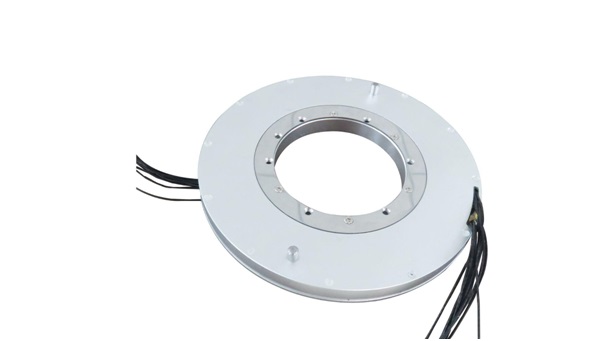Slip ring technology plays a vital role in various industries, enabling the seamless transmission of signals and power between rotating and stationary parts. In this article, we will delve into the world of slip ring technology, specifically focusing on its relevance in CT (Computed Tomography) imaging and pancake slip ring applications. We will discuss the fundamental principles of slip rings, their role in transmitting signals and power, and the significant impact they have on these specific fields.
Understanding Slip Ring Technology:
Slip ring technology is an ingenious solution designed to overcome the limitations of traditional wired connections in rotating systems. A slip ring, also known as a rotary electrical joint or collector, acts as a bridge, allowing the transfer of electrical signals and power between the rotating and stationary parts of a system. It consists of two main components: the rotor and the stator.
The rotor is the rotating part of the slip ring, typically mounted on the shaft of the rotating equipment. It consists of conductive rings that are electrically insulated from each other. The stator is the stationary part of the slip ring, usually connected to the fixed structure. It contains brushes or contacts that make electrical connections with the rings on the rotor.
Importance of Slip Ring Technology in CT Imaging:
CT imaging, also known as computed tomography, is a medical imaging technique that provides detailed cross-sectional images of the human body. Slip ring technology plays a crucial role in CT systems by enabling continuous rotation of the gantry while transmitting various signals and power between the stationary and rotating parts.
In CT scanners, the slip ring facilitates the transmission of high-frequency signals from the X-ray source, detectors, and other imaging components to the stationary data acquisition system. It allows for seamless rotation without tangling or damaging wires, ensuring uninterrupted data acquisition and precise image reconstruction. Slip rings also enable the transmission of power to various components within the system, including the X-ray tube and cooling systems.
The reliability and performance of slip rings in CT imaging are of utmost importance. High-quality slip rings are designed to withstand continuous rotation, maintain signal integrity, and minimize electrical noise. They undergo rigorous testing and adhere to strict industry standards to ensure optimal performance and patient safety.
Significance of Pancake Slip Rings:
Pancake slip rings, also known as flat slip rings, are a specialized type of slip ring widely used in applications where space is limited. They are characterized by their compact and flat design, making them ideal for installations with height restrictions. Pancake slip rings find applications in various industries, including robotics, automation, wind turbines, and precision rotary equipment.
The compact form factor of pancake slip rings allows for easy integration into space-constrained systems, where conventional slip rings would be impractical. These slip rings offer the same functionality as traditional slip rings but with a reduced height profile. This makes them highly suitable for applications where vertical space is limited.
In addition to their compact size, pancake slip rings are engineered to provide reliable and efficient signal and power transmission. They are designed to handle high rotational speeds, ensuring smooth operation even in demanding environments. Pancake slip rings are available in different configurations, allowing for customization based on specific application requirements.
Conclusion:
Slip ring technology plays a crucial role in various industries, including CT imaging and pancake slip ring applications. In CT systems, slip rings enable continuous rotation while maintaining signal integrity and power transmission, ensuring accurate image acquisition. Pancake slip rings, on the other hand, offer a compact solution for space-limited installations, providing reliable signal and power transmission in a reduced height profile.
As technology continues to advance, slip ring designs will evolve to meet the increasing demands of these industries. Continuous innovation in slip ring technology will result in improved performance, enhanced reliability, and expanded capabilities, enabling new possibilities in CT imaging, robotics, automation, and other fields. By understanding the significance of slip ring technology in CT and pancake slip ring applications, professionals and system designers can make informed decisions and harness the full potential of these technologies for their specific requirements.
